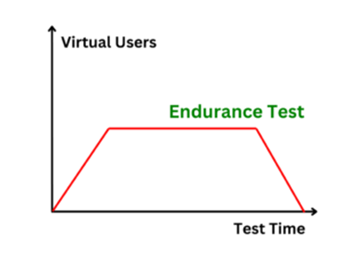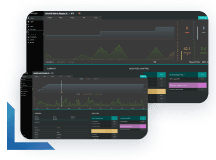
Imagine your most important tool—a banking app, presentation software, or medical device—failing when you need it most. The consequences can be overwhelming. Remember how you felt when your online shopping cart stopped functioning during a flash sale? Or how about the annoyance of your favorite streaming service freezing during a movie night? Downtime in software is not only uncomfortable; it may also be costly and frustrating.
This is where endurance testing comes into play, not as a safety net but as a secret weapon. It aggressively stresses your system, simulating real-world use cases. Consider it a boot camp for your system, pushing it to its boundaries to identify hidden weaknesses and establish rock-solid resilience. Endurance testing promotes user trust, boosts customer satisfaction, and ultimately preserves your brand reputation by assuring seamless performance even under extreme loads.
In this article, we’ll dive into the world of endurance testing. We’ll look at its characteristics, tools you can use, challenges, and best practices. Get ready to learn the keys to creating rock-solid programs that withstand the test of time and user expectations.
What is endurance testing?
Endurance testing, also known as soak testing, is a sort of performance testing used to assess how a system performs under prolonged stress. This entails giving your system a lot of work and watching to see if it slows down or crashes. It allows you to ensure that it can withstand real people using it all day without issue.
Endurance testing simulates hundreds or even thousands of users engaging with your system at the same time. The test runs for a set amount of time—let’s say hours or days. The system is closely monitored for performance issues like slowdowns, crashes, and transaction failures. Any issues discovered during testing are fixed before the technology is made available to real users.

Characteristics of endurance testing
Here are some major characteristics that distinguish endurance testing from other types of performance testing:
- While endurance testing can overlap with load testing, it’s primarily classified as nonfunctional testing. Beyond the core functionality of the program, it focuses on the system’s overall stability, scalability, and resource management.
- For effective endurance testing, careful planning and constant monitoring are required. Setting defined objectives, establishing performance standards, and implementing dependable monitoring methods are all necessary for collecting accurate data and making informed decisions.
- Unlike other performance tests, which focus on brief bursts of high load, endurance testing replicates continuous and persistent usage over lengthy periods, typically hours, days, or even weeks. This helps expose faults that might not be apparent during brief load surges.
- The primary purpose is to analyze the system’s capacity to sustain consistent performance and stability throughout time. Monitoring resource use, memory leaks, and reaction times ensures that the system does not decline or collapse under a sustained workload.
- While some endurance tests begin with a constant load, many use gradually increasing load patterns to simulate real-world usage scenarios in which traffic and resource needs fluctuate over time. This gives you a more complete sense of the system’s scalability and adaptability.
- Various metrics for performance are constantly monitored and analyzed throughout the test. This information is critical for detecting bottlenecks, resource leaks, and potential performance regressions that might compromise the system’s long-term stability.
- Effective endurance testing uses methodologies and tools that mimic real-world user behavior and workload patterns. To ensure that the system can manage actual usage conditions, it may be necessary to simulate different user types, concurrent activities, and variable resource needs.
Effective endurance testing uses methodologies and tools that mimic real-world user behavior and workload patterns.
Types of endurance testing
Endurance testing is adaptable. Although the core idea remains the same, below are some of the most common variations, each addressing stability from a different perspective and catering to varying demands.
- Constant load endurance testing replicates a steady level of user traffic and resource demands throughout the test. It can test stability under predicted workloads and uncover resource leaks or memory management concerns.
- Step load endurance testing gradually raises the load on the system over time in set increments. It can help you understand how the system grows and reacts to increasing demand, indicating potential bottlenecks or performance degradation at different load levels.
- Random load endurance testing simulates random changes in user activity and resource use to simulate real-world traffic patterns. It delivers a more realistic stress test and aids in the discovery of performance flaws that could otherwise go undetected under static load settings.
- Open-loop endurance testing is a “hands-off” approach in which the system remains alone for extended periods. It is useful for assessing long-term stability and robustness, particularly in mission-critical systems that must operate continuously.
- Closed-loop endurance testing is where the tester actively interacts with the system, mimicking user activities and data flow. It allows for more targeted testing and can discover specific functional or performance concerns that may arise during prolonged use.
- Scalability endurance testing evaluates the system’s ability to manage greater workloads by introducing more resources, such as servers or CPU cores. It is critical for anticipating future infrastructure requirements and guaranteeing that the system can adapt to a growing user base or data volume.
- Recovery endurance testing simulates system failures or outages and assesses the length and effectiveness of the system’s recovery process. It assesses the system’s resilience in the face of unexpected events and ensures that downtime remains minimal during probable disruptions.
Tools for endurance testing
There are many tools available for performing endurance testing, but we will look at just a few of them. For ease of comparison, these tools will be divided into two distinct categories.
Open-source tools
These are free tools that provide more control and flexibility over test settings. However, you may need technical expertise to set up and use them. They may be unsuitable for handling huge workloads in complex configurations. The following are some examples of open-source endurance testing tools:
- Apache JMeter: This is a Java-based open-source application. It was originally intended to test the functional behavior and performance of web applications, but it has now been expanded to include other test functions. You can use it to test the strength of an application or to analyze its performance under various load conditions.
- K6: This is a free and open-source performance testing tool designed for developers and engineers. You can use it to test the reliability and performance of a system and to detect any problems on time. For further information, see its documentation.
- Locust: This is an open-source and simple-to-use performance testing tool written in Python. It includes a simple web interface that displays the status of your test in real-time. The documentation explains how to get started.
Commercial tools
These are tools that have an easy-to-use UI with many functionalities and integrations that allow for comprehensive testing. Although they require a purchased license, they are appropriate for enterprise or professional use.
- Tricentis NeoLoad: This product provides automated performance testing tools for enterprises and organizations. It’s simple to use, quick, and scalable. It provides real-time test results, allowing you to resolve any issues that arise. It also includes many other features. In addition, Tricentis provides several pricing options tailored to your organization or project.
- WebLOAD: This tool is designed for large-scale performance and the testing of complicated systems. WebLOAD can handle millions of concurrent users as well as real-world user behavior. It also includes starter, professional, and enterprise pricing plans from which you can choose, depending on the task at hand.
Challenges of endurance testing
Endurance testing can be a valuable technique for guaranteeing software stability, but it’s not without its limitations. Here are some of the major drawbacks:
- Time and resource intensive: Endurance testing can take hours, days, or even weeks to complete, requiring significant time and resource investment from both testers and hardware infrastructure.
- Complex test design: Accurately replicating real-world user behavior and load patterns requires complex scripting and configuration, requiring real expertise from your testing team.
- Data overload: Continuous monitoring and data collection generate vast amounts of data, requiring efficient analysis tools and skills to draw useful conclusions.
- Unrealistic scenarios: While endurance testing simulates real-world demands, it may not always capture all possible user behavior or unforeseen events, leading to blind spots.
- Inadequate functional testing: The emphasis on sustained performance overshadows core functionality testing, which can lead to errors or regressions in key functionalities going unnoticed.
Endurance testing can be a valuable technique for guaranteeing software stability, but it’s not without its limitations.
Scenarios where endurance testing might not be ideal:
- Early development stages: Basic functional testing may be adequate for early prototypes or alpha versions before investing in resource-intensive endurance testing.
- Simple applications: For small, single-user applications with regular usage patterns, simpler performance tests may be enough to establish stability.
- Limited money or time constraints: If resources are limited, faster performance tests, such as load testing, may be a better alternative.
- Frequent code changes: Maintaining and updating endurance test scripts can be challenging in Agile development environments with frequent code changes.
Alternative approaches such as load testing, stress testing, or a combination of several performance testing techniques may be more appropriate in circumstances where the disadvantages exceed the benefits.
Best Practices
The following are some excellent practices for conducting effective and efficient endurance testing:
1. Planning and preparation
Establish clear objectives. What are you hoping to accomplish with endurance testing? Determine key performance indicators (KPIs) and metrics for success.
Understand your system. To develop realistic test scenarios, analyze the architecture, resource use, and expected demand patterns.
Select the appropriate tools. Depending on the complexity and cost of your test, choose appropriate technologies for workload simulation, monitoring, and data analysis.
Create a complete test plan. Outline the test technique, duration, phases, and expected results.
2. Test execution and monitoring
Begin with a stable baseline and gradually increase the load over time to uncover performance bottlenecks.
Use scripts and tools to correctly simulate real-world user behaviors and resource demands.
Throughout the test, keep track of crucial performance measures, such as response times, resource use, and error rates.
To save time and resources, automate test execution and data analysis.
3. Analysis and reporting
Thoroughly examine the results. Using the acquired data, identify patterns, bottlenecks, and performance regressions.
Effectively communicate your findings. Share test results with stakeholders clearly and succinctly, emphasizing actionable insights and recommendations.
Apply the results to system improvement. Address highlighted issues through code optimization, resource allocation changes, and infrastructure upgrades.
Following these best practices will allow you to conduct effective endurance testing that will provide significant insights into your system’s long-term performance and stability, resulting in a more reliable and robust experience for your users.
Conclusion
A stable system can help you distinguish yourself from the competition; nobody wants to constantly experience system downtime. Endurance testing can help bridge that gap.
This post was written by Vincent Chosen. Vincent is a web developer and technical writer. He has proficient knowledge in JavaScript, ReactJS, NextJS, React Native, Nodejs and Database. Aside from coding, Vincent loves playing chess and discussing tech related topics with other developers.
